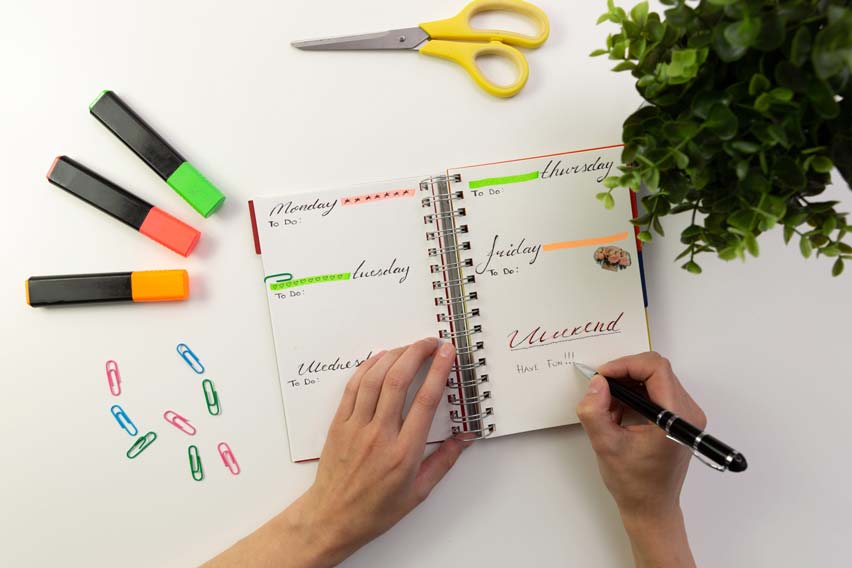Bullet Journals: wellness fad or utterly fab?
Bullet Journaling seems like the latest wellness fad, with fans across the world stocking up on notebooks, coloured pens and washi tape to create their organisational masterpiece. But what is a Bullet Journal and why is it such an effective wellness tool?
Creator Ryder Carroll was diagnosed with ADD as a child and spent his life struggling to find an organisational method that suited his needs; that was easy to understand and easy to stick to. Originally created for his own use, he started to share the methods he’d taught himself and found that it had a profoundly positive impact on those who followed it. Gone were the days of having a million thoughts running through his head, now he had a little book which helped him find peace and clarity.
By creating a customised journal to organise what he needs to do, plan out the future and catalogue events as they happen, it allowed him to start sifting through his life and figure out what’s important to him, so he could switch from being busy, to being productive.
How it works
Key:
The key is the cornerstone of every Bullet Journal. You should be able to look at life at a glance and pick out tasks, events and things to remember quickly. Pop a little signifier before each entry to identify what type it is. Here’s a few examples of symbols that might work for you:
- A box for tasks and things you need to do; when the task is done, fill in the box.
- A triangle for appointments and places to go; when it’s done, fill in the triangle.
- A dot for things to remember or log. It could be anything from the name of that TV show you keep getting recommended or the book you just finished.
- A heart for memories and things that mean something that you don’t want to forget.
- A star goes next to a box or dot for things that need an extra visual clue, i.e. urgent, important things.
Index:
It’s vital to keep an index of your pages, it doesn’t have to be anything fancy, but it’ll allow you to find the information you’ve written down, quickly.
Future Log:
This page is just a quick summary of what’s coming up in the year; just pop in the date and a brief description of the event and add it in to the right month when you have space.
Monthly Log:
A great snapshot of your month; just put down the dates in the month and which day of the week falls on that date, then add in the biggest event of that day. Don’t worry, you’ll be able to go into more detail on your Monthly Task List
Monthly Task List:
The perfect place to get an overview of each month; birthday parties, presents to buy, appointments to make. They all go in the monthly task list, so you can fit them in to your monthly log where you have gaps.
Daily Log:
This is the heart of your Bullet Journal; it’s not only a place to write down your To Do List, it’s the perfect space to write down achievements, memories, books you’ve finished reading, meals you enjoyed and meetings with friends! It’s a log, not a list, so write down things that are important to you, so you can remember them in the future. It will encourage you to reflect on your day and give yourself a little high five for all the things you’d done, even if some days that’s just making the bed and walking the dog.
Migration:
Migration is one of the elements that make the Bullet Journal such an effective tool; if you have a task that you don’t complete and every month you seem to me migrating it to the next month, it’s time to ask yourself ‘do I really want/need to do this?’. If you can’t be bothered to write it out for the seventh time this year, are you actually going to bother doing it!
Although it may seem like a flash in the pan trend, Bullet Journals have made a huge difference to thousands of users around the globe. The freedom to create, organise and reflect in one handy little journal has changed the way people have live and can have a really positive impact! So the big question really is; what’s your plan for your Bullet Journal?









